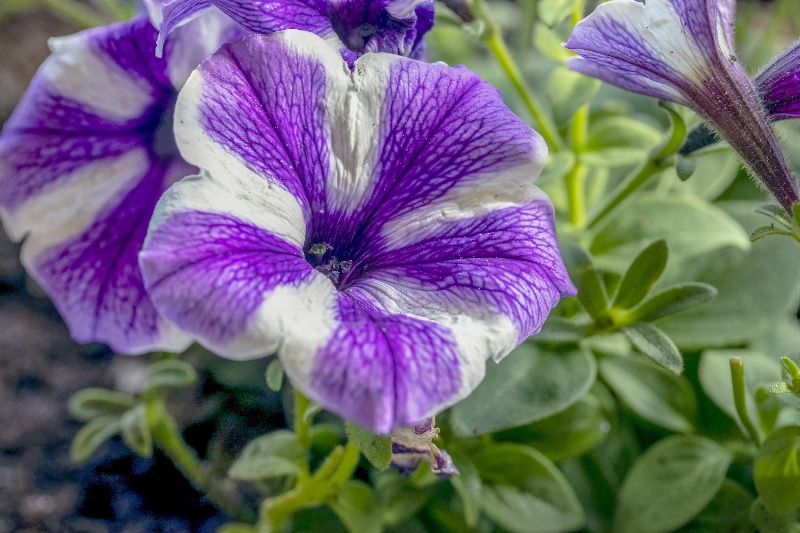Knowing how to cut back petunias is not limited to trimming, but it also encompasses deadheading and pruning heavily. As a gardener, you must master these maintenance practices to rejuvenate your petunias and encourage healthier blooms. This way, your plants will grow much more vigorously, and you may enjoy an extended blooming period.
The good thing with petunias is that they are also generally easy to grow. Therefore, the maintenance of these plants will not be meticulous and demanding. However, it might still be beneficial to provide petunias a stable environment such as the greenhouse if your climate gets extreme.

Comprehensive Guide On How To Prune Petunias
Technique #1. Deadheading
The first technique that you must master to prune petunias correctly is deadheading. Sometimes, cutting back refers to merely the removal of faded blooms on your petunias. Like other flowering plants, petunias will benefit from deadheading because removing the dead blooms will help them grow healthier flowers.
This way, the plant gets to focus its energy on making new flowers since the faded blooms don’t compete with the new ones. You’ll also be preventing seed formation, so the flowering season gets longer. And as a bonus, removing the faded flowers on petunias will keep them looking neat throughout the season.
When should you deadhead petunias? You’ll notice petunias that have faded flowers during the flowering season and will begin to wilt downward. Their colors look less lively, and instead of the trumpet and upright shape, they hang low.
Pinch or snip
To remove these old blooms, use your thumb and index fingers to pinch the stem behind the blossom. This will make it easier to pull the dead flower from the plant. Continue checking your petunias and remove the wilted flowers by hand.
Some gardeners also use scissors to remove the faded flowers. However, be sure that you disinfect it first, and it’s sharp enough to provide a clean cut on the stem behind the bloom. Any plant is prone to acquiring diseases and fungal infections if the tools are not sanitized.
Technique #2. Trimming
Another way to cut back petunias is to do it lightly by trimming them. This is an ideal maintenance practice to maintain their size and shape and also rejuvenate the plants. Trimming petunias is no different when trimming other plants as well.
You want to choose an area where smaller stems branch from the main stem and cut them close to the node. Choose those stems that no longer produce flowers or have an underwhelming amount of foliage and trim them. Much like with deadheading, trimming these branches can encourage flower production.
You’ll also help rejuvenate the plant and develop new growth that has healthier foliage. You can trim your petunias in the middle of the summer with sharp and sterile tools as well. Be mindful of providing a clean cut to avoid disease transmission among plants.
Technique #3. Cutting back
Finally, cutting back petunias all the way through the entire plant is perhaps a heavier way to trim them. Sometimes, deadheading nor trimming will not be enough to rejuvenate the plant. Cutting back the plant to the ground can help you regrow leggy petunias with underwhelming blossoms and yellowing foliage.
To cut back petunias heavily, you want to start above the stem node with sterile and sharp pruners. You can prune as far as you like depending on how long and overgrown the stem is. Just remember that the branches are two inches from the base to allow the plant to generate new growth.
More so, remember that some plants only produce flowers at the end of the stems, and these petunias will benefit if you clip some branches weekly as soon as you planted them. Don’t be afraid to remove stems and cut above a node even though they bear gorgeous-looking flowers. Over time, you’ll notice new growing tips below where you cut, and they will bear healthier flowers.
How To Help Your Petunias Regrow
You can further encourage your petunias to regrow if you keep them in the ideal environment and perform maintenance practices to keep them healthy. Suppose your region experiences challenging weather or harsh temperatures; consider keeping the petunias protected in the greenhouse. You must also maintain soil moisture without letting the medium gets soggy.
Proper hydration will help your petunias recover from pruning quickly. Some gardeners also fertilize their petunia to boost their blooms. Depending on the type you have, you can feed every two weeks in July.
Conclusion
Petunias are one of the best flowering plants to grow, but they require maintenance to ensure healthy growth. Therefore, you must learn how to cut back petunias and master the three techniques, which are deadheading, trimming, and cutting back itself. Pruning petunias will rejuvenate the plants’ leggy growths and even produce better-looking flowers.
You can pinch or snip off the faded blooms to deadhead petunias, and this should maintain healthy-looking plants during the season. On the other hand, light trimming will suffice when you notice branches with underwhelming foliage and flowers. And lastly, you may need to cut back your plants heavily if the previous two techniques don’t lead to changes.
Overall, just remember to sterilize your tools and check for their sharpness. This will ensure a sharp and clean-cut for the neater end product and prevent disease transmission among the petunias.
